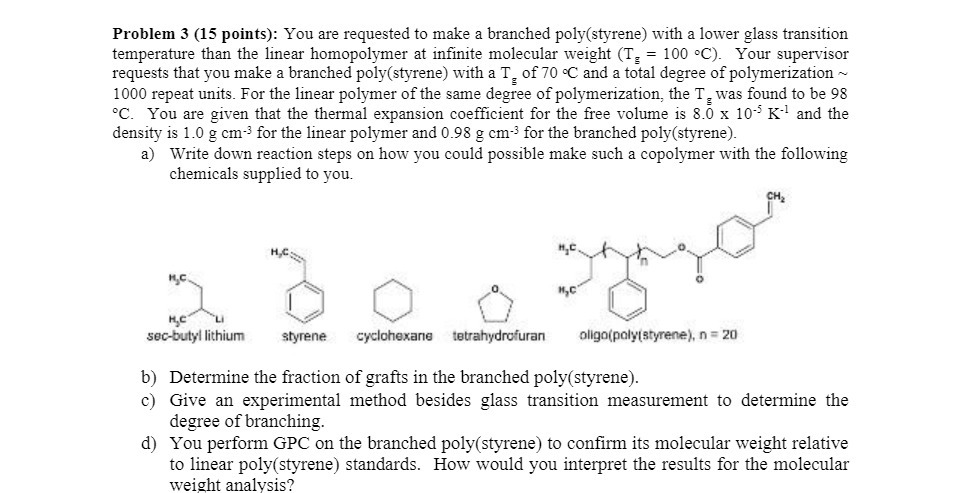Answered step by step
Verified Expert Solution
Question
1 Approved Answer
Problem 3 ( 1 5 points ) : You are requested to make a branched poly ( styrene ) with a lower glass transition temperature
Problem points: You are requested to make a branched polystyrene with a lower glass transition
temperature than the linear homopolymer at infinite molecular weight Your supervisor
requests that you make a branched polystyrene with a of and a total degree of polymerization
repeat units. For the linear polymer of the same degree of polymerization, the was found to be
You are given that the thermal expansion coefficient for the free volume is and the
density is for the linear polymer and for the branched polystyrene
a Write down reaction steps on how you could possible make such a copolymer with the following
chemicals supplied to you.
b Determine the fraction of grafts in the branched polystyrene
c Give an experimental method besides glass transition measurement to determine the
degree of branching.
d You perform GPC on the branched polystyrene to confirm its molecular weight relative
to linear polystyrene standards. How would you interpret the results for the molecular
weight analysis?

Step by Step Solution
There are 3 Steps involved in it
Step: 1

Get Instant Access to Expert-Tailored Solutions
See step-by-step solutions with expert insights and AI powered tools for academic success
Step: 2

Step: 3

Ace Your Homework with AI
Get the answers you need in no time with our AI-driven, step-by-step assistance
Get Started


